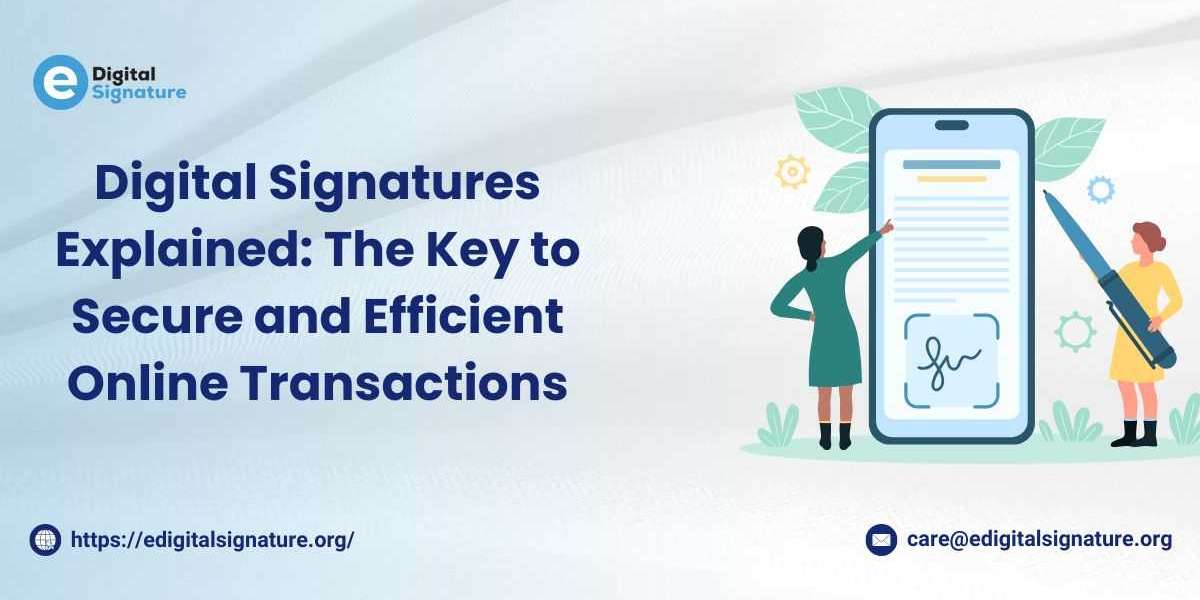Introduction
As the world continues to shift toward digital interactions, the need for secure, efficient, and trustworthy online transactions has become increasingly vital. Businesses and individuals alike rely on electronic communications and documents, but how can we ensure that these digital exchanges are authentic, tamper-proof, and legally binding? Enter the digital signature—a cutting-edge technology that addresses these concerns and sets a new standard for security and efficiency in the online world. In this blog, we’ll explore what digital signature are, how they work, and why they’ve become indispensable for secure and efficient online transactions.
What is a Digital Signature?
A digital signature is not the same as an electronic signature. While electronic signatures might simply be a scanned image of a handwritten signature or a typed name, a digital signature is far more sophisticated. It’s a cryptographic method that ensures the authenticity and integrity of electronic documents and messages. At its core, a digital signature uses a pair of cryptographic keys: a private key and a public key. The private key is used to create the digital signature, while the public key is used to verify it. When a digital signature is applied to a document, it creates a unique “fingerprint” that is mathematically linked to the document’s contents and the signer’s private key. Any alteration to the document after it is signed will cause the signature to fail verification, providing a robust layer of security.
How Digital Signatures Work
Digital signatures rely on public key infrastructure (PKI) to function effectively. Here’s a simplified overview of the process:
Creating the Signature:
- The sender generates a cryptographic hash of the document or message.
- The hash is then encrypted using the sender’s private key, creating the digital signature.
- This signature is unique to the document and the signer.
Sending the Document:
- The sender transmits the document, along with the digital signature, to the recipient.
Verification:
- The recipient uses the signer’s public key to decrypt the digital signature.
- They also generate the hash of the received document.
- If the decrypted signature hash matches the recipient’s generated hash, the document is verified as authentic and unaltered.
This cryptographic process ensures that the document hasn’t been tampered with and that the signer’s identity is genuine. In other words, digital signatures provide both data integrity and authentication, making them a cornerstone of secure online transactions.
Why Digital Signatures Are Essential for Online Transactions
Enhanced Security:
In an age where cyber threats are rampant, digital signatures offer a strong defense against forgery and fraud. The cryptographic algorithms used in digital signatures ensure that only the holder of the private key can sign a document. If anyone tries to alter the content after signing, the signature will become invalid, making tampering easy to detect.
Authentication and Trust:
Digital signatures verify the identity of the sender, establishing trust between parties. This is particularly important for online transactions, where the parties may never meet in person. Knowing that a document is digitally signed by a trusted entity reassures recipients that the transaction is legitimate.
Data Integrity:
A digital signature guarantees that the document has not been altered since it was signed. This ensures that the information received is exactly as the sender intended, making digital signatures crucial for contracts, financial transactions, and other sensitive communications.
Legally Binding:
Many countries recognize digital signatures as legally binding under electronic signature laws and regulations. From the E-SIGN Act in the United States to the eIDAS Regulation in the European Union, these legal frameworks provide confidence that digitally signed documents hold the same weight as traditional paper-based signatures.
Streamlined Processes and Cost Savings:
Traditional paper-based signatures involve printing, signing, scanning, and physically delivering documents. Digital signatures eliminate these steps, reducing costs associated with paper, printing, and courier services. They also speed up the signing process, allowing transactions to be completed in minutes rather than days.
Applications of Digital Signatures
The versatility of digital signatures makes them valuable in a wide range of industries and use cases:
Financial Transactions:
Digital signatures are widely used in banking and financial services to secure fund transfers, loan agreements, and investment documents.
Legal and Corporate Contracts:
Law firms and businesses use digital signatures to execute contracts, confidentiality agreements, and corporate filings without the need for physical signatures.
Healthcare and Medical Records:
Digital signatures help ensure the authenticity of patient records, consent forms, and prescriptions, meeting compliance requirements for data protection.
Government and Public Sector Services:
Governments use digital signatures to streamline e-governance initiatives, tax filings, and public service applications, improving efficiency and reducing fraud.
Future Trends in Digital Signatures
As digital transformation accelerates, the role of digital signatures is set to grow. Advancements in blockchain technology, artificial intelligence, and cloud-based signature solutions are likely to enhance their functionality and accessibility. For example, blockchain can provide an immutable ledger for signature verification, while AI can help identify and prevent fraudulent signatures in real time. Additionally, as remote work and digital transactions continue to rise, digital signatures will become even more integral to global business operations. Their ability to ensure security, efficiency, and compliance makes them a key enabler of the digital economy.
Suggested Read- Class 3 digital signature
Conclusion
Digital signatures have transformed the way we authenticate and verify online transactions. By combining robust security, data integrity, and legal recognition, they provide a reliable foundation for trust in the digital age. Whether it’s signing contracts, approving financial transactions, or protecting sensitive records, digital signatures are the key to secure and efficient online interactions. As the digital world continues to evolve, adopting digital signatures is no longer a luxury—it’s a necessity. By leveraging this powerful technology, businesses and individuals can ensure that their online transactions are not only efficient and convenient but also secure and trustworthy.



